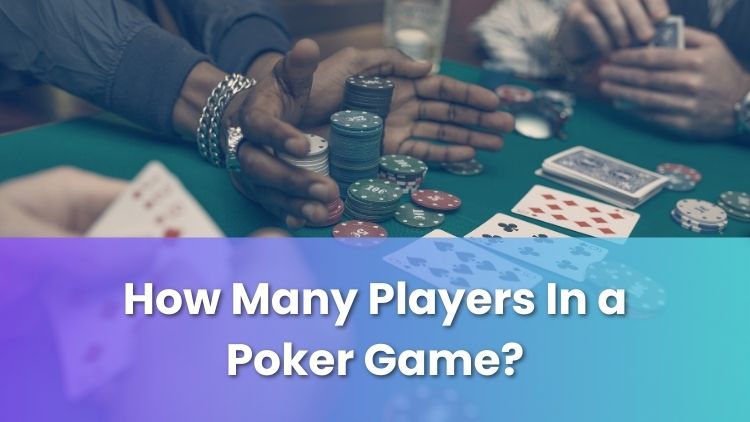
Ever sat down to watch a poker game and wondered how many people can actually play at once? You're not alone. For anyone new to the world of poker, or just exploring online casinos for the first time, it's a fair question. Unlike some board games with fixed rules, poker is incredibly flexible — and the number of players at the table might influence the way the game feels and unfolds.
Poker is a card game where players place bets based on the strength of their hand. But it's not just about the cards; it's about trying to read others, managing strategies, and there’s always an underlying element of chance. Whether you're hosting a casual game at home or exploring digital tables online, understanding how many players are typically involved may be a good place to start.
How Many People Do You Need to Play Poker?
The minimum number of players needed for a poker game is two. This is called a heads-up match — essentially, one-on-one poker. It’s fast-paced, intense, and often used in professional tournaments when only two players remain at the final table. For beginners, it might feel a bit full-on, as there’s nowhere to hide and every move counts.
For more relaxed environments like home games, having between five and eight players tends to work really well. With this number, there’s enough interaction to keep things exciting, but not so many players that it feels chaotic. It also means you're not sitting around waiting too long for your turn, which is ideal if you're still learning the flow of the game.
It’s worth noting that not all poker variants are the same, and some might have unique table limits. Online platforms especially can differ, depending on the site’s software and game type- always check the game description before joining to avoid surprises.
Max Number of Players in Poker
In a typical live or online poker game, the maximum number of players at a single table is usually ten. That’s the industry norm for games like Texas Hold’em and Omaha — two of the most popular formats found both in-person and on UK-licensed online casino platforms.
But while ten players is considered the standard max, you might come across situations where this number changes slightly. Online casinos, for example, sometimes offer “short-handed” tables — usually with six players — or “full ring” tables, which accommodate nine. This helps tailor the experience for different player preferences and skill levels.
In casual home games, it’s technically possible to play with more than ten, though it’s not usually recommended. Once you push past that number, the game can slow significantly. It becomes harder for the dealer (or whoever is managing the game) to keep track of action, and players may find themselves sitting idle for long stretches. It also increases the number of hands dealt, which may affect the size of the pot.
Online poker rooms will set their own table limits based on how the game has been designed. If you're exploring online casinos for the first time, be sure to review the game rules carefully. The setup might not always mirror what you might expect from a physical game — software versions of poker can vary in speed, visuals, and how many players can sit at one table.
What Is the Best Number of People to Play Poker?
The “best” number of players in poker depends entirely on what kind of game experience you’re looking for. If you're new and still getting used to the mechanics of poker — such as how betting rounds work, or what makes a strong hand — then a smaller group can be ideal. Games with four to six players may offer more breathing room, shorter wait times between turns, and a gentler pace.
For those with more experience, or for players who enjoy reading body language and bluffing, a table with seven to nine players may provide a more tactical challenge. With more opponents to consider, every betting round becomes more complex.
At full tables of nine or ten, the game often slows down, especially in the early stages. However, this also gives players more time to think — which can be useful for those who enjoy strategic depth. You’ll also find that large tables create potentially larger pots (the total amount of chips or money that players are betting on a single hand).
Keep in mind that there’s no magic number that guarantees a perfect experience. What works well for one group might not suit another. The goal is to find a setup where everyone at the table feels comfortable and able to engage responsibly.
Can You Play Poker With Only 2 Players?
Yes, poker can be played with just two participants. This version is commonly known as heads-up poker and differs significantly from games involving larger groups. With only two players at the table, the structure of the game is more focused, and the pace tends to be quicker.
In a heads-up game, each round involves just two hands being dealt, which means the action moves at a faster rhythm compared to multiplayer tables. The roles of small blind and big blind — compulsory bets that begin each hand — alternate between the two players. With fewer opponents and cards in play, players may find themselves making decisions more frequently, which can affect how they approach each hand.
Several UK-licensed online platforms include heads-up options within their poker offerings. If you are considering playing this format, it’s important to take time to understand the rules and structure of the specific game or table, as these can vary from one site to another.
**The information provided in this blog is intended for educational purposes and should not be construed as betting advice or a guarantee of success. Always gamble responsibly.
